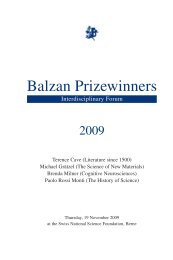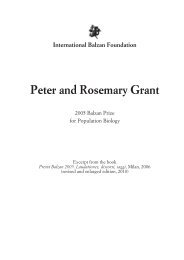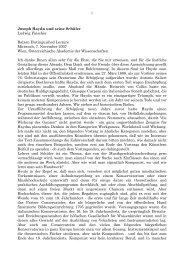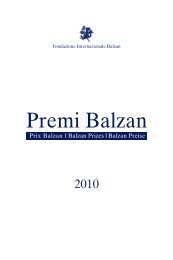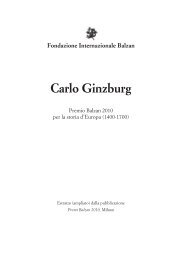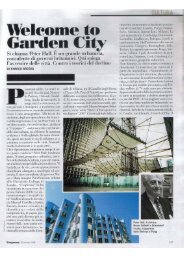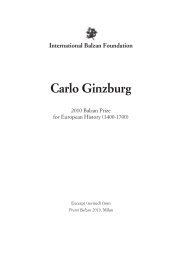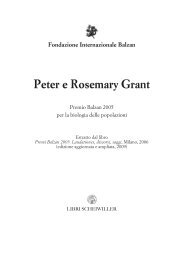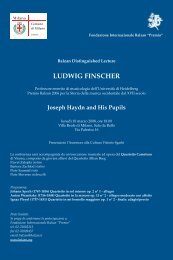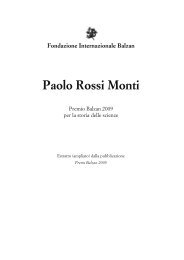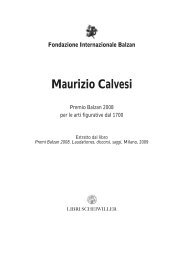Russell J. Hemley and Ho-kwang Mao
Russell J. Hemley and Ho-kwang Mao
Russell J. Hemley and Ho-kwang Mao
Create successful ePaper yourself
Turn your PDF publications into a flip-book with our unique Google optimized e-Paper software.
2005 Balzan Prize<br />
New Superconductors<br />
<strong>Hemley</strong> <strong>and</strong> <strong>Mao</strong>’s interests in both pressure-induced electronic transitions <strong>and</strong><br />
complex materials led them to the field of superconductivity. One of the important<br />
features of the perovskite-based high-T c superconductors is their similarity<br />
to natural minerals. Indeed, the first syntheses of the minerals required the techniques<br />
of mineral physics for their characterization because of the polyphase nature<br />
of the material <strong>and</strong> the high degree of disorder. In fact, the condensed matter<br />
physics community was unable to characterize these materials when they were<br />
first synthesized because of their complexity, <strong>and</strong> they had to turn to mineral<br />
physicists (<strong>and</strong> in particular the group at Carnegie), who had the requisite microanalytical<br />
methods. As such, they were the first to measure the vibrational<br />
spectra of the 90 K superconductors [Phys. Rev. Lett. 58, 2340 (1987)], work<br />
that could not be duplicated in many condensed physics laboratories for several<br />
years because of the inability to accurately examine small polyphase samples.<br />
Following this publication, these labs obtained identical micro-optical instrumentation,<br />
<strong>and</strong> thus the effort played a useful role in the further characterization<br />
of the high-T c superconductors. 63<br />
In the 1960s Alexis A. Abrikosov, the 2003 Physics Nobel Laureate, predicted<br />
that superconductivity would be enhanced in metals at high density, 64 <strong>and</strong> Neil<br />
W. Ashcroft calculated that the celebrated high-pressure metallic phase of hydrogen<br />
could be a very high-temperature superconductor, 65 as discussed above.<br />
With the advances already made in hydrogen, <strong>and</strong> with experience with high T c<br />
materials, <strong>Hemley</strong> <strong>and</strong> <strong>Mao</strong> decided in the mid-1990s to begin direct studies of<br />
superconductivity in elemental systems – to test the general ideas of Abrikosov<br />
<strong>and</strong> as a stepping stone toward solid metallic hydrogen itself. This required, however,<br />
the development of altogether new experimental magnetic <strong>and</strong> electrical<br />
methods for quantitative measurements in minute samples at multimegabar pressures.<br />
To this end, they began a program to extend the technology developed at<br />
Stishov’s Institute of High Pressure Physics in Troitsk with megabar diamond<br />
cell methods. This new initiative was highly successful <strong>and</strong> opened an entirely<br />
new area of research. Numerous elemental superconductors have been discovered,<br />
including sulfur [Nature 390, 382 (1997)], boron [Science 293, 272 (2001)]<br />
<strong>and</strong> lithium [Science 297, 1213 (2002)]. To date, some 23 elemental superconductors<br />
have been found at high pressure, increasing the number of known superconducting<br />
elements to 52. Like the work on dense hydrogen, the results are<br />
28



